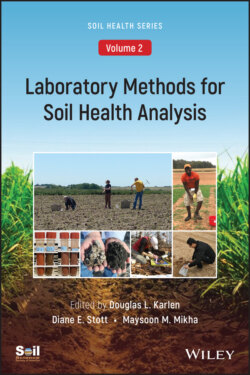Читать книгу Laboratory Methods for Soil Health Analysis, Volume 2 - Группа авторов - Страница 43
Introduction
ОглавлениеSoils contain several important C pools and play an essential role in the global C cycle. Total soil C consists of organic C and inorganic C, with organic C being part of soil organic matter (SOM). Estimated amounts of organic C stored in world soils range from 1100 to 1600 Pg, more than twice that in living vegetation (560 Pg) or the atmosphere (750 Pg) (Sundquist, 1993; Lehmann and Kleber, 2015). Most of the world’s productive soils are in cultivated agriculture, which through plow‐based management, has increased SOM loss, accelerated soil erosion, and decreased soil aggregation (Lal, 2015; Karlen and Rice 2015). Intensive tillage, low crop yield, lack of crop diversification, and excessive removal of crop residues have reduced C replenishment to the soil and thus negatively affected soil health (Rice, 2005; Bonini Pires et al., 2020). Those practices have decreased SOC by as much as 26% in the upper 30 cm and 16% in the top 100 cm of many soil profiles (Sanderman et al., 2017).
The Soil Science Society of America (SSSA) defines SOM as the organic fraction of soil exclusive of undecayed plant and animal residues (SSSA, 1997). Measurements of SOM include decayed plant residues, soil microorganisms, soil fauna, and byproducts of decomposition that lead to the production of humic substances in a process called humification (Horwath, 2007). SOM can be classified in two distinct pools, active and passive, based on their chemical composition, stage of decomposition, and turnover time (Cambardella and Elliot, 1994; Gougoulias et al., 2014). Active pools exhibit a turnover in months to years, while turnover in passive pools occurs in decades to millennium (Magdoff, 1996). Soil organic matter can also be divided into three major categories: particulate organic matter (POM), humus, and resistant organic matter (ROM) (Bell and Lawrence, 2009). Each SOM classification has a method of measurement and converts the data to SOM using conversion factors that vary. Therefore for consistency, we recommend reporting the values as organic C.
